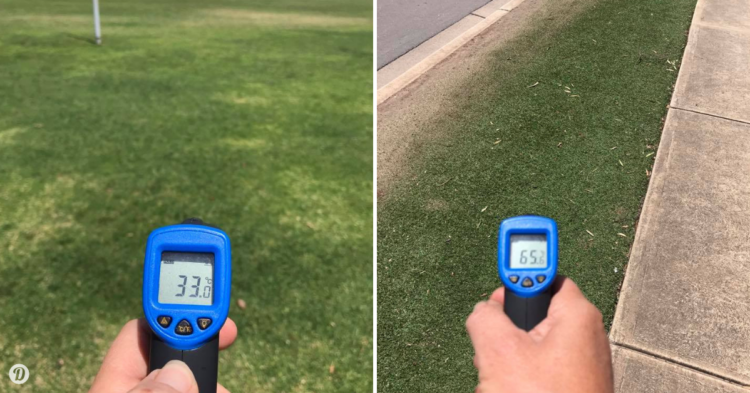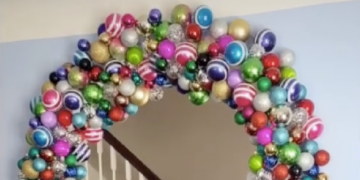Homeowners have tons of decisions to make about what to do with their properties and how to best maintain them, keep costs down, and keep the curb appeal up. And if they’re parents, too, they have many more safety considerations, too.
What might seem ideal, however, occasionally has more hidden concerns. Before anybody commits to changing over their lawn to artificial turf, one gardener in Australia wants everybody to see something they might not have thought of.
Australia is know more for its harsh desert outback and its stunning reefs, but gardeners there can have plenty of fun, too.

It’s just that summers there can be quite unforgiving. In addition to the snakes and the spiders, Australians who want to go outside in the summer have to worry about skin cancer and the sheer heat.
But scorching hot summers aren’t unique to Australia, so it’s worth taking note of one gardener’s demonstration of just how hot artificial turf can get.

Sophie Thomson, a gardening presenter on Australian TV, chose a nice, hot day to aim her digital infrared thermometer at her lawn to do a side-by-side comparison.
“The predicted temperature in Murray Bridge was 35 today but look at the temperature of the fake turf nature strip compared with the oval!” she wrote in a Facebook post.

That translates to about 95 degrees Farhenheit. The natural grass showed a slightly lower temperature than that, 33 Celsius or 91 F.
The artificial turf, on the other hand, was almost twice as hot, according to Sophie’s thermometer.

“Yes that was 65.6!!!!!?” she wrote, “Double that of the real turf oval nearby, however I had actually expected the oval to be cooler, but don’t know how long since it has been watered.”
Apparently that’s not even as hot as it could get because they hadn’t had many hot days in a row at the time.
“Wait till we have a string of hot weather and the #heatbank effect from the #faketurf really kicks in,” she wrote.
She has seen artificial turf spring up in her neighborhood as a low-maintenance, drought-resistant option for folks who still want to see some green on their properties.

However, as she pointed out to Kidspot , there are plenty of problems with it, too, particularly the smell. “If a dog or cat widdles on your fake turf, this is like weeing on a carpet. There are no microbes to break down. Unless you wash it off, or disinfect it, it’s not going to disappear.”
For Sophie, the big issue with the artificial turf is what all that heat could do to kids playing on it.

“I read comments from parents about the glue in their kids’ sneakers melting from the heat on fake turf ovals,” she said. “They’re plastic, they’re made from petrochemicals and we shouldn’t have kids playing on that.”
The heat given off by fake turf on a front lawn can affect those inside the house as well.
“What I observed is they have their roller blinds down all the time because the front of their house gets so hot, with no small trees to shade the house or anything like that,” Sophie says. Chances are they’re running their A/C more as well.
Some towns have gone so far as to ban the installation of fake grass in certain areas.

And it’s largely because of how it contributes to heat in cities. “Instant turf contributes to urban heat because it absorbs heat and it will pass on heat into the root zone of street trees,” said one expert in a Holdfast Bay council meeting, according to news.com.au.
Some people tried to suggest that Sophie had rigged her measurements a bit, however.
“Interesting how people are missing that BIG OBVIOUS F FOR FAHRENHEIT,” wrote one user, referring to the slight blurring of the 65 degree pic. However, 65 in Fahrenheit converts to just 18 C, a much cooler temp than that thermometer would pick up on such a hot day.
h/t Kidspot
















































